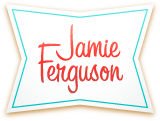Multitasking madness
As an expert multitasker, it’s no surprise that I’m quite skilled at productive procrastination. I’ve only done a tiny bit of work on the novel in the past week, but I’ve accomplished a zillion other things!
One of the more fun and challenging of my recent accomplishments is that I submitted a short story to the LAURA Short Fiction contest. This is an annual short fiction contest sponsored by Women Writing the West. The contest is named for Laura Ingalls Wilder. Stories submitted to this contest must feature a female protagonist and be set in the American West.
I read the Little House books over and over, but until the past few years I never thought I’d write western fiction. My first western short story, “A Good and Honorable Thief,” came about for two reasons: I discovered I’d written a “meet cute” and decided to write a few more, and since I had enjoyed the historical research I did for With Perfect Clarity I thought why not set my meet cute in the 1800s in the American West?
I’ve now written five western short stories, and have a novel (which is probably really a series) in the queue. 🙂
In addition to submitting a story to that contest, I’ve been revamping a few short stories I wrote last year, and am sending them out to short fiction markets. This has been a little challenging. Every time I think a story is ready to go out I feel a sense of panic. Where should I send it? What if it’s not their type of story? Where should I send it next? Aaaaa!
This is clearly too much thinking… 🙂
I am happy to report that the level of panic I feel now is not nearly as bad as it was a month ago when I first started submitting short stories. Right now I have three stories that are out, plus the one I submitted to the LAURA Short Fiction contest. Sure, that’s only four stories, but that’s also the most I’ve sent out at any one time ever.
I put together a planning board using Scapple, and am using this to help me keep track of which stories are out, which ones I should be working on, etc.
(Note that the name of my contest submission is not shown, as it’s a blind contest.)
I’m still fiddling with the layout, and of course will probably play with the colors indefinitely. Each story category has a different color – for example, my contemporary fantasy stories are green.
Here are the categories I’m using at the moment:
- Backlog
- Outlining
- Incomplete/To Start
- Editing Backlog
- Top Priorities
- Submitted
- To Resubmit
- Accepted/Complete
The stories in the backlog have all been started; most are complete and just need edits. The outlining list currently contains one novel that has been started, the sequel to that novel, and a totally separate novel that has not been started. I’m making notes to help me figure out what I might (or might not) want to incorporate in all three. Incomplete/To Start currently contains one short story that is about halfway done, but I’m not going to work on it for a while. The editing backlog contains stories that are complete but which need editing. In some cases these will be minimal edits; in others they’re first drafts that need a lot of setting/sensory details, which I tend to add on my second pass through a manuscript. Top priorities include the novel I’ve been so productively avoiding, a short story that someone might be interested in, and a new short story I’m writing for the Fantasy in the City bundle that I’m curating through BundleRabbit. The other three categories (Accepted/Complete, Submitted, and To Resubmit) are self-explanatory.
Why do I need this planning board? I don’t need it, but right now I have more titles in the pipeline than I ever have before, and it’s helpful to be able to look at them this way than in a spreadsheet. It’s also motivating to see how much I’m accomplishing.
Another thing I’ve started is keeping track of my daily accomplishments. I was already tracking this by month – I track both my planned goals and my actual accomplishments, as it’s often interesting to see what I ended up doing as compared to what I intended to do. Being temporarily in between jobs (two more weeks left!) meant I had a lot more time to work on writing tasks, but because I’m a ferocious multitasker I’d get to the end of the day and not remember what I did. So about a month ago I decided to track what I did each day, and that’s been very helpful.
On the days where I work on a lot of little things and don’t remember them all, now I can look at my list and see just how much work I did. And on the days where I don’t get as much done, I can see that too, and seeing my lack of achievements gives me more motivation to work hard the next day. 🙂


